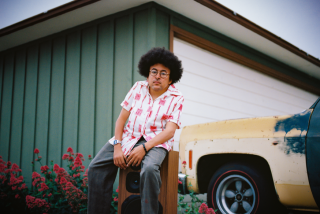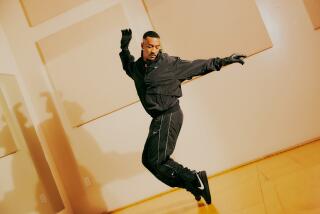Frankie Manning dies at 94; helped popularize the Lindy Hop
Frankie “Musclehead” Manning, a Harlem dancer and Tony Award-winning choreographer widely celebrated as one of the pioneers of the Lindy Hop, a breathlessly acrobatic swing dance style of the 1930s and ‘40s, died April 27 at New York City’s Lenox Hill Hospital of pneumonia. He was 94.
The effortlessly nimble Manning was a star attraction of Harlem’s Savoy ballroom and brought to swing dance a flair for the theatrical that helped catapult the Lindy Hop from ballrooms to stage and screen, said Cynthia Millman, who co-wrote Manning’s self-titled 2007 memoir.
His nickname developed from the chants of dancers, “Go, Musclehead, go!” as they watched Manning’s strong and closely cropped head glisten with sweat as he kicked and spun himself, and his partners, into human propellers.
Appropriately, the dance reportedly owed its name to transatlantic aviator Charles Lindbergh, when one Savoy dancer told a reporter, “We flyin’ like Lindy!”
Manning’s chief innovation was popularizing the thrilling “air step” move in which a female partner is tossed in the air and lands in time with the music. After introducing this choreographic accent, sometimes called an “aerial,” he and fellow Lindy hoppers developed dozens of others in which partners fling each other around, over and between various limbs.
Manning and several notable big bands helped make the Savoy an epicenter of swing. It was an elegant, racially integrated dance hall boasting two large stages where the big bands of Count Basie, Chick Webb and Cab Calloway could duel rhythmically.
Some of the Savoy’s finest dancers, including Manning, were recruited to join Whitey’s Lindy Hoppers, a dance performance team that appeared in Hollywood movies such as “Hellzapoppin’ ” (1941).
As part of the team, he was the opening act for singers including Billie Holiday and performed before King George VI of England in 1937.
When he returned from Army service during World War II, he started his own troupe but the music scene had changed radically. First came the rise of bebop jazz, which was largely undanceable, and then the advent of rock ‘n’ roll.
With a family to support, Manning spent 30 years as a postal clerk, until a popular swing reawakening in the 1980s.
At the time, Manning was approached by a pair of young swing enthusiasts who found his name in the phone book. He agreed to teach them a few steps, leading to a career resurgence that made him a headliner at Lindy Hop workshops around the world.
In 1989, he teamed with other dance legends Fayard Nicholas, Cholly Atkins and Henry LeTang to choreograph the musical revue “Black and Blue,” which ran two years on Broadway. All the choreographers shared the Tony that year. Manning went on to compose dance steps for the Alvin Ailey American Dance Theater, among other dance companies. He also taught the Lindy Hop to actor Denzel Washington for the Spike Lee film “Malcolm X.”
Frank Benjamin Manning was born May 26, 1914, in Jacksonville, Fla., and raised by his laundress mother in Harlem. He said he learned his dancing “instincts” by watching his mother and her friends dance at rent parties, social gatherings to help friends or neighbors raise money to pay the landlord.
He worked up his courage to enter the Savoy in 1933 and was noticed by Herbert White, a boxer-turned-bouncer who hand-picked members of an elite club of Savoy dancers. White formed a series of dance performance teams, and Manning became one of its brightest members in his dual roles as a featured dancer and chief choreographer from the mid-1930s to early 1940s.
Manning created the over-the-back air step in 1935 at a weekly dance competition at the Savoy, and it became a sensation.
After returning from the war in the Pacific, Manning formed a troupe, the Congaroo Dancers, that appeared on screen and shared stage bills with Nat “King” Cole, among others. In 1955, he left entertainment to focus on his family and civil service career.
His marriage to the former Gloria Holloway ended in divorce.
Survivors include his companion, Judy Pritchett of Queens, N.Y., and Fort Bragg, Calif.; two children from his marriage, Marion Price of Atlanta and Frank Manning Jr. of Leonia, N.J.; a son from a previous relationship, Charles “Chazz” Young, a professional tap dancer, of Las Vegas; a half brother; seven grandchildren; and nine great-grandchildren.
Bernstein is a writer for the Washington Post.
More to Read
Start your day right
Sign up for Essential California for the L.A. Times biggest news, features and recommendations in your inbox six days a week.
You may occasionally receive promotional content from the Los Angeles Times.






